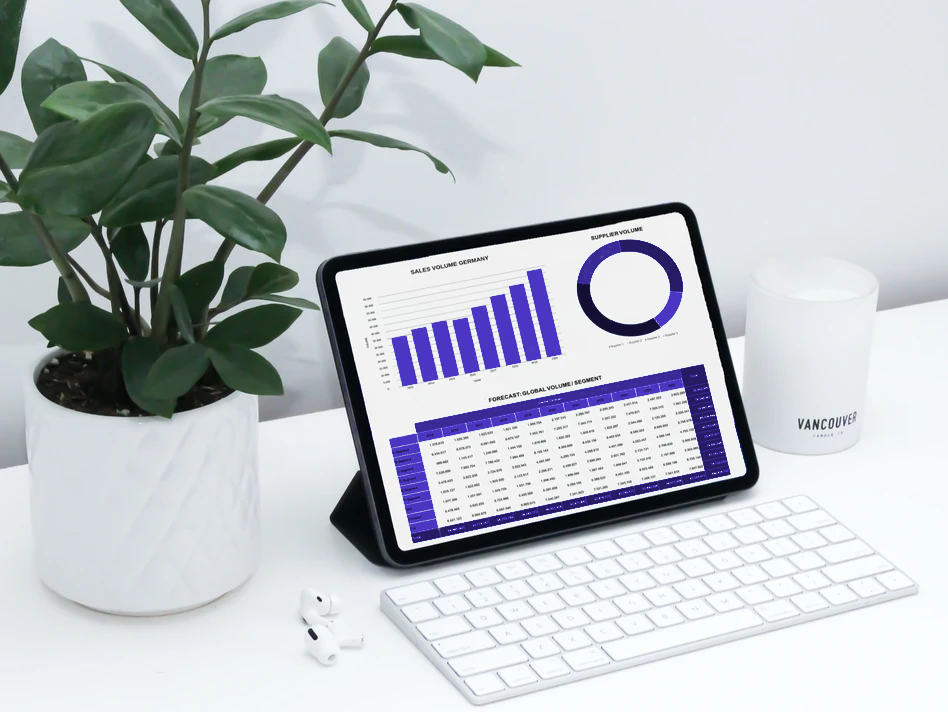INSIGHTS for your Company's Advantage
Delve deep into the worlds of GOBENCH, INDEC and the dynamic landscapes of Competitive Analyzes and Benchmarking. Our services and efforts ensure that you become an expert in our range of knowledge.

Delve deep into the worlds of GOBENCH, INDEC and the dynamic landscapes of Competitive Analyzes and Benchmarking. Our services and efforts ensure that you become an expert in our range of knowledge.

In one of our last articles, we already took a look at what benchmarking actually is and which process steps are necessary for a successful benchmarking process.
But not all benchmarking is the same! There are different types of benchmarking with different approaches and different goals.
Different Types of Benchmarking
In today's very fast-paced world, companies are constantly looking for ways and strategies to improve their own performance and business. The ultimate goal is to maximize profit through improvement, while using their resources as efficiently as possible. For this reason, companies engage in benchmarking.
However, not all benchmarking is the same - therefore, different types of benchmarking are distinguished, which are more or less suitable depending on the industry and the defined goals. The different types are described in more detail below.
Internal Benchmarking
Internal benchmarking is considered the simplest form of benchmarking, as the comparison is carried out within the own organization. Necessary data is usually available and can be provided without much effort. The goal of internal benchmarking is to identify ideal solutions for processes, tasks and procedures that occur in several places in the same organization. By implementing the best solutions the entire organization can grow. Internal benchmarking is most effective in decentralized organizations because the processes and tasks differ more than in a centrally managed company. However, it is also true that internal benchmarking has the lowest potential for innovation and improvement because external influences are absent.
External Benchmarking
External benchmarking can be an extension of an internal benchmarking project or it can be carried out independently. Unlike internal benchmarking, external benchmarking uses one or more companies for comparison that do not belong to their own organization. In the external view, a distinction is again made between different types of benchmarking.
Generic Benchmarking
Generic benchmarking is characterized by the fact that a cross-industry and cross-functional comparison of processes and methods takes place. Due to this characteristic, there are no restrictions regarding the organizations with which the comparison is carried out. Instead, the search for a suitable comparison object is based on the research subject (e.g., customer service response time). The best-in-class - i.e., the organization or company with the best solution approach - is then selected. A great learning effect can be achieved with the aid of generic comparison, but it also requires a lot of effort.
Functional Benchmarking
As the name suggests, functional benchmarking is about comparing processes and methods in identical business functions (e.g. in logistics). As a rule, companies from outside the industry are used for the comparison. This offers the advantage of good access to information, as the companies are not in competition with each other and thus can exchange information openly. At the same time a high knowledge transfer is possible due to the external perspective. Often, this type of benchmarking is used when an industry can demonstrate superior results in a certain area.
Competitive Benchmarking
Competitive benchmarking focuses on other industry-relevant market participants. On the one hand, it is possible to determine one's own positioning in the market in this way; on the other hand, particularly valuable insights can be gained from an analysis of the strengths and weaknesses of a competitor. Due to the comparison with direct competition, one's own weak points can be better understood and solutions to optimize the own performance identified. In addition, the solution approaches observed at the competitor have already proven themselves in practice, meaning that the implementation can be started directly without prior time consuming test phases. Due to the external perspective and the closeness to the industry, a high level of knowledge transfer can be realized with competitive benchmarking. However, obtaining information and data from competitors is significantly more difficult than benchmarking companies from outside the industry.

For our benchmarking and competitive intelligence software GOBENCH, we offer numerous practical add-ons with which you can optimally map and analyze your use cases.
Subscribe our newsletter
INDEC
GmbH & Co. KG
